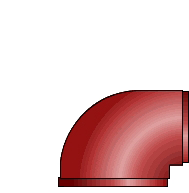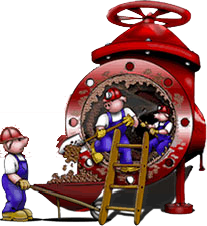Your raw water/well collection system will benefit from cleaning and restoration to its maximum flow capacity if;
- Pump discharge head pressures are gradually, but steadily increasing
- Correspondingly, the volume of flow, (GPM), carried by the system is gradually, but steadily decreasing
- The water entering the plant is causing strainers to plug up, settling ponds to fill up and upping the number of times to blow off tanks
- Water treatment costs are escalating
- New raw water supply sources are planned to come on line
- Additional piping is being added to the system
- Necessary periodic intake and well screening cleanings indicate what is likely to be found in the system
- Laminar flow characteristics and Hazen-Williams "C" Factors have disappeared into the, "it's almost too low to be measured", abyss
- It was installed under difficult circumstances and not cleaned before it was placed into service
- Maintenance staff knows every blow off and drain connection in the system on an arm weary first name basis
- Operating and maintenance costs, particularly energy usage, are escalating
- Pretreatment at the water supply site isn't performing to the standards required
- Replacing the pipe means discarding serviceable piping whose only sin is that it is dirty
- Repairs, taps and visual inspection confirms that the system is "dirty"
Certified Underground Utility Contractor
License Number CU-C057357
License Number CU-C057357



